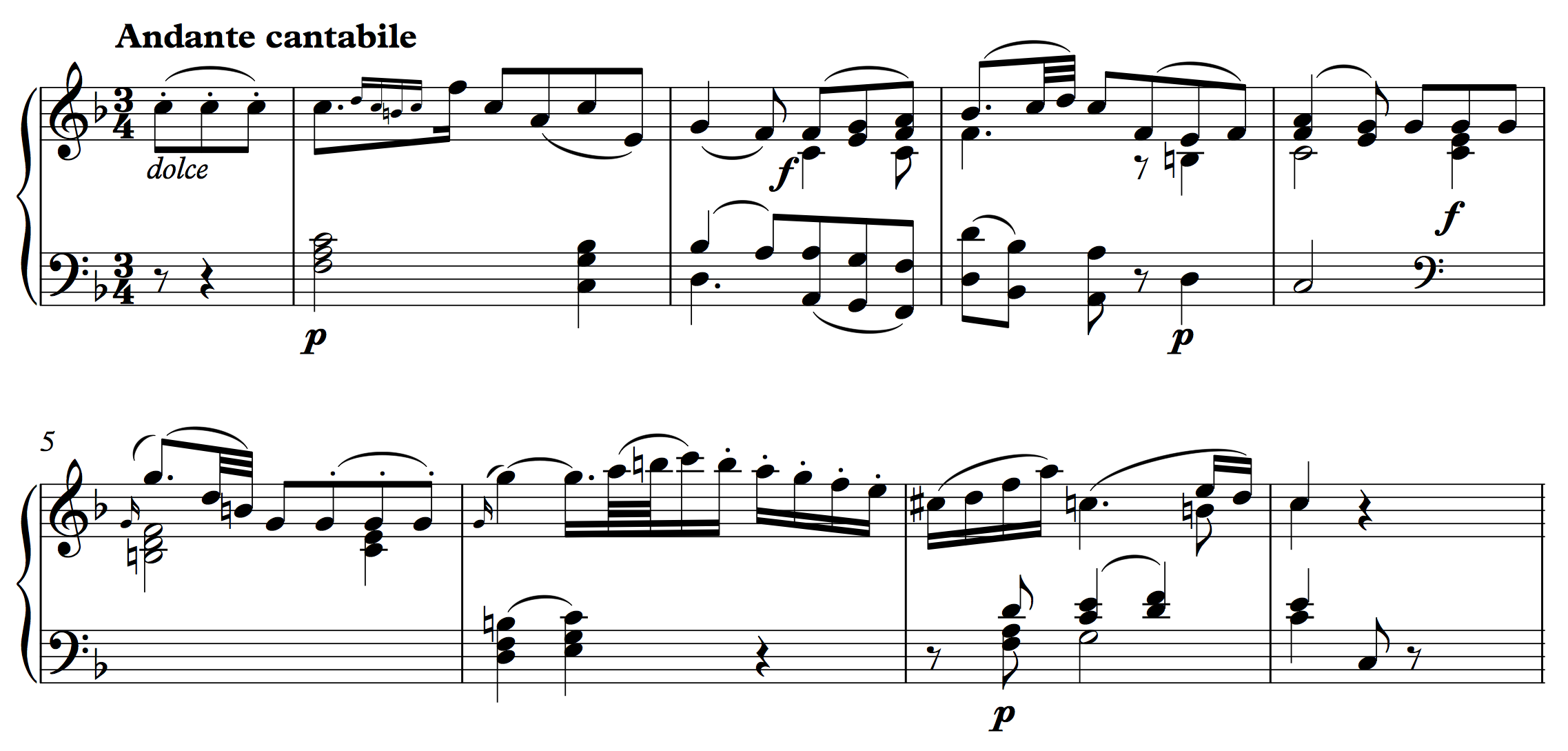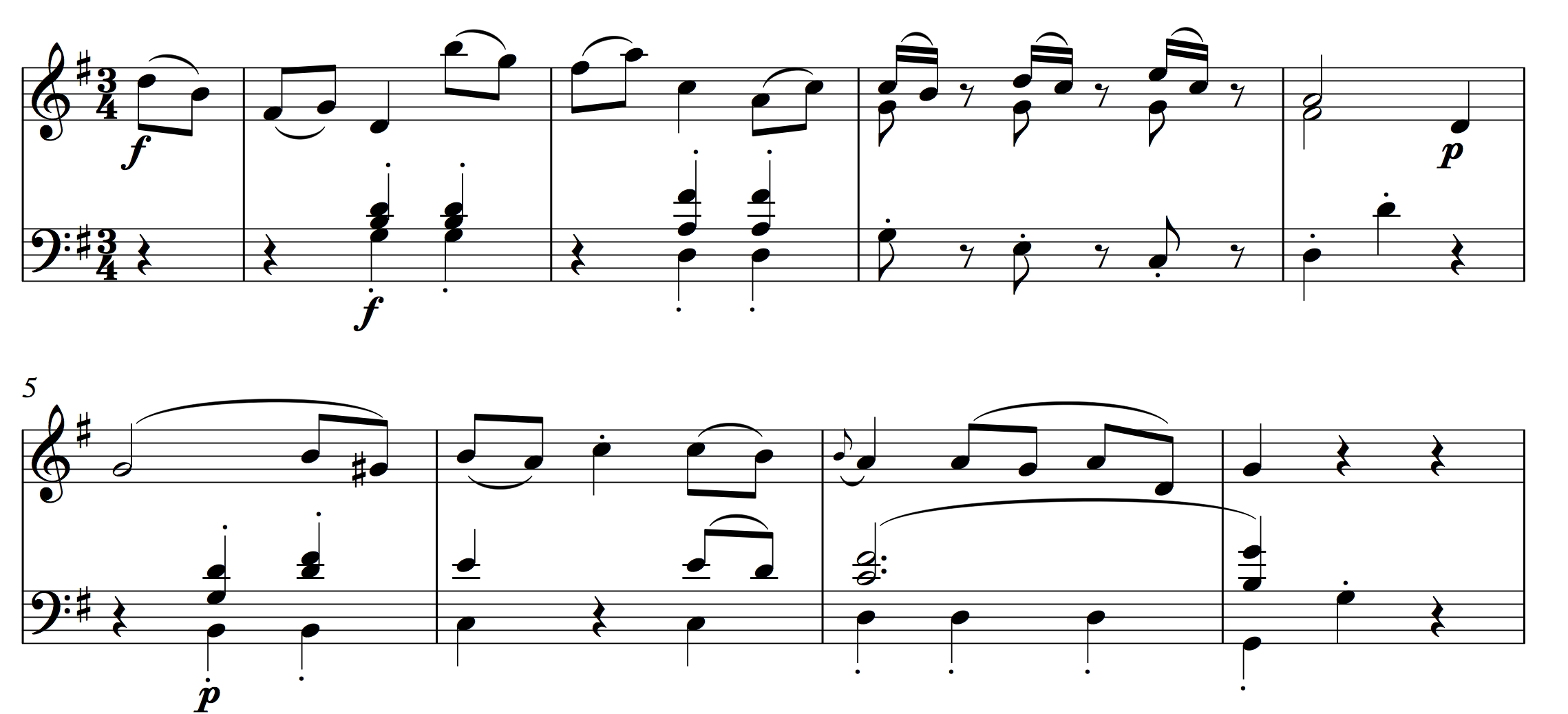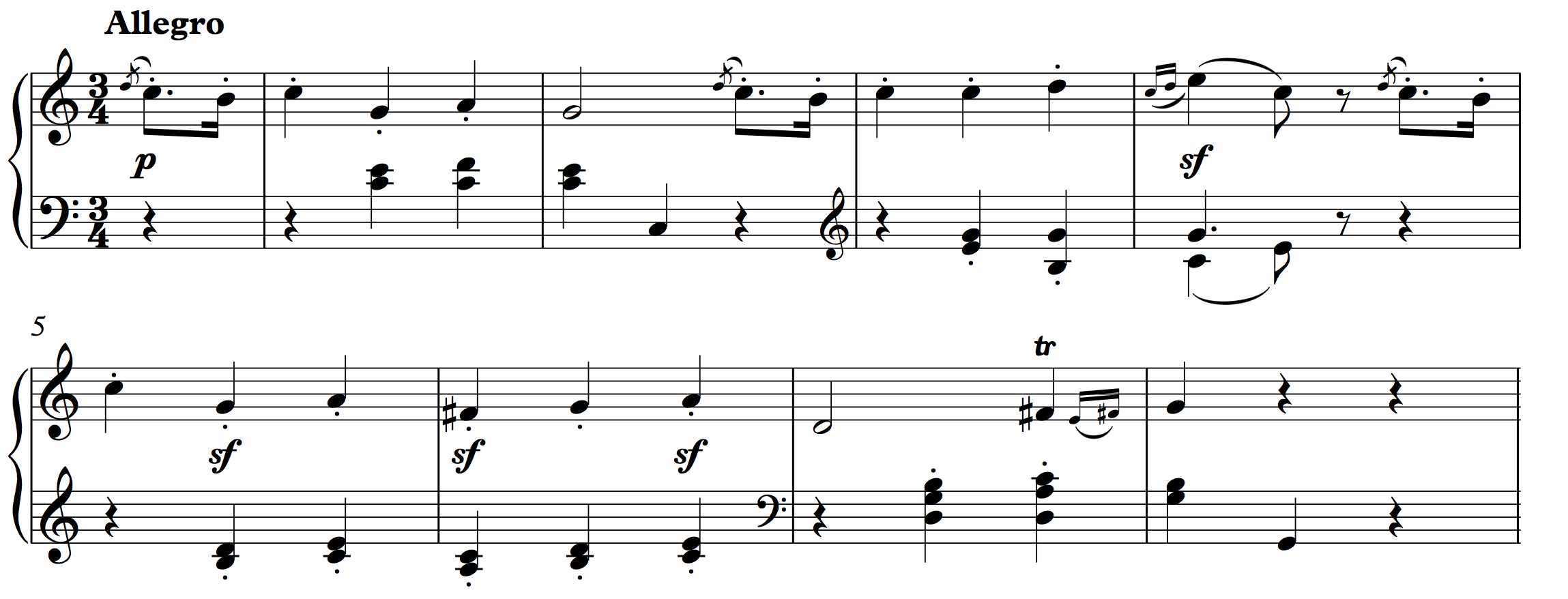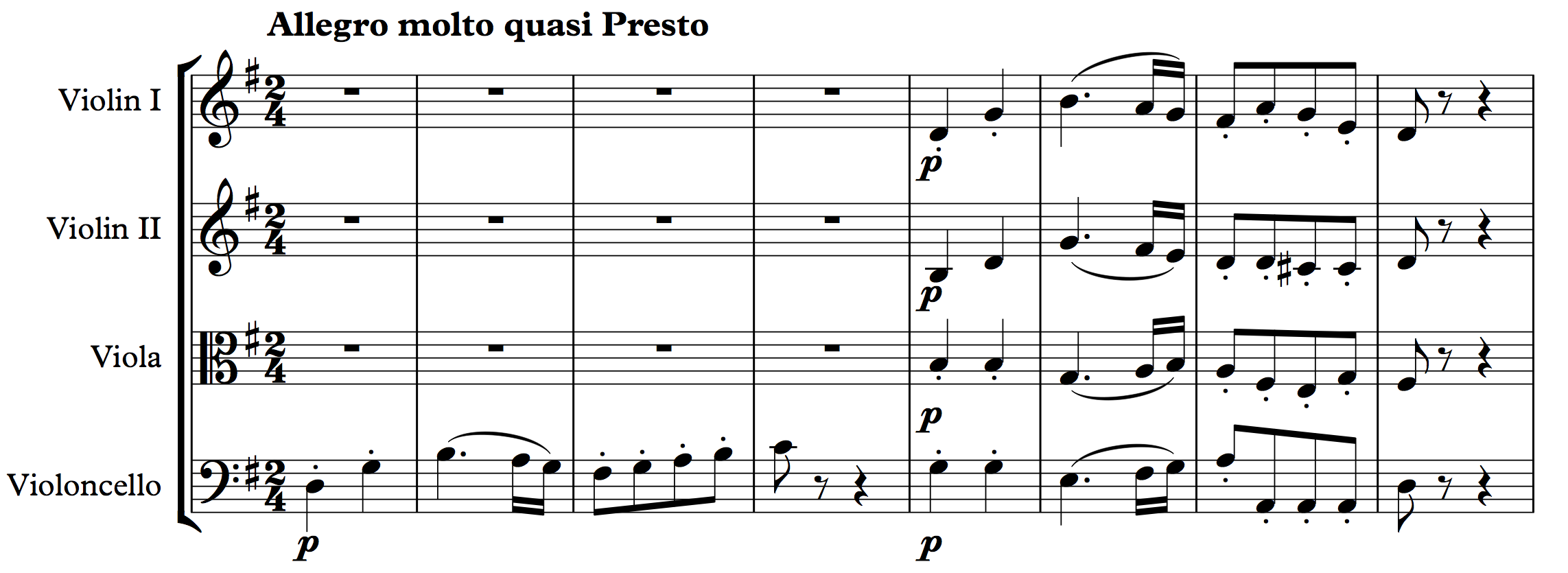Hybrid themes
Hybrid themes mixes the functional features of sentences and periods. William Caplin has identified four primary types:
Hybrid 1
Hybrid 1 combines an antecedent phrase with a continuation phrase.

A prototypical example is found in the first eight measures of Mozart’s Piano Sonata in C major, II. The antecedent phrase contains a basic idea characterized by the repeated notes forming its anacrusis. This is followed by a contrasting idea formed from a scalar ascent leading to the phrase’s half cadence in m. 4. Following the antecedent phrase, the music begins to express continuation function, primarily through fragmentation and an increase in surface rhythm. In the middle of m. 6, the characteristic melodic motives are liquidated into conventional scalar figuration leading to a V:PAC.
Hybrid 2
Hybrid 2 combines an antecedent phrase with a four-measure cadential progression.

Here, the four measures subsequent to the antecedent support a single cadential progression:
I6 ii6/5 V I
Notice that this four-measure phrase does not display any markers of continuation function.
##The Compound Basic Idea
Just as we sometimes find composers combining different features of the two primary thematic types, we also often find combinations of different types of phrase. The “compound basic idea,” or CBI, combines the melodic characteristics of the antecedent function with the harmonic characteristics of the presentation function. Like an antecedent, it presents a basic idea followed by a contrasting one. But like a presentation, the compound basic idea simply prolongs tonic, without ending in a cadence.
Hybrid 3
The third hybrid type strongly resembles the first hybrid. Rather than beginning with an initiating antecedent, however, its first phrase is a CBI. Following the CBI, Hybrid 3 concludes with a continuation that ends with a cadence.

In this example, from Beethoven’s Violin Sonata, Op. 30, the melodic structure of the initiating phrase contains two contrasting ideas, each of which begins with the same dotted figure. However, unlike a typical antecedent, the phrase only prolongs tonic as the V6 on the last beat of m. 3 only decorates the tonic through a lower neighbor motion rather than creating cadential articulation. Thus, the phrase is best understood as a “compound basic idea.”
The concluding phrase is a typical continuation expressed through fragmentation, melodic sequence, and increased harmonic rhythm.
Hybrid 4
Hybrid 4 resembles the period, with the exception that the first phrase is comprised of a “compound basic idea” rather than an antecedent. Following the CBI, the concluding phrase expresses the function of a consequent, typically altering the return of the contrasting idea so that the theme ends with a strong cadence.

The cello’s presentation of the initiating phrase contains two distinct melodic ideas. But this phrase’s conclusion, on the C4 in m. 4, is not sufficient to create cadential closure. When the remaining strings enter in m. 5, they work through the same basic and contrasting ideas, but are able to create a I:PAC to close the consequent phrase.
Share